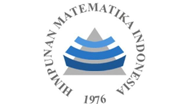Classification of Numeracy Achievement of Junior High School Educational Units Based on National Assessment Data using Random Forest
Abstract
Keywords
Full Text:
PDFReferences
M. Mellyzar, N. Novita, M. Muliani, M. Marhami, and S. R. Retnowulan, ‘The Literacy and Numeracy Ability Profile Which are Viewed From Minimum Assessment Components (AKM)’, LJ, vol. 11, no. 2, p. 168, Dec. 2023, doi: 10.22373/lj.v11i2.19866.
OECD, ‘PISA 2022 Results Factsheets Indonesia’, 2023. [Online]. Available: https://www.oecd.org/en/publications/pisa-2022-results-volume-i-and-ii-country-notes_ed6fbcc5-en/indonesia_c2e1ae0e-en.html
X. S. Wang, L. B. Perry, A. Malpique, and T. Ide, ‘Factors predicting mathematics achievement in PISA: a systematic review’, Large-scale Assess Educ, vol. 11, no. 1, p. 24, June 2023, doi: 10.1186/s40536-023-00174-8.
K. E. S. Street, L.-E. Malmberg, and S. Schukajlow, ‘Students’ mathematics self-efficacy: a scoping review’, ZDM Mathematics Education, vol. 56, no. 2, pp. 265–280, May 2024, doi: 10.1007/s11858-024-01548-0.
N. Ghimire and K. Mokhtari, ‘Evaluating the predictive power of metacognitive reading strategies across diverse educational contexts’, Large-scale Assess Educ, vol. 13, no. 1, p. 4, Feb. 2025, doi: 10.1186/s40536-025-00240-3.
A. H.-M. Low, A. H.-L. Lim, and F.-F. Chua, ‘Predicting Factors that Affect East Asian Students’ Reading Proficiency in PISA’, JOIV : International Journal on Informatics Visualization, vol. 7, no. 3–2, pp. 2065–2074, 2023, doi: 10.30630/joiv.7.3-2.2341.
E. G. Bayirli, A. Kaygun, and E. Öz, ‘An Analysis of PISA 2018 Mathematics Assessment for Asia-Pacific Countries Using Educational Data Mining’, Mathematics, vol. 11, no. 6, p. 1318, Mar. 2023, doi: 10.3390/math11061318.
A. Bertoletti et al., ‘The Determinants of Mathematics Achievement: A Gender Perspective Using Multilevel Random Forest’, Economies, vol. 11, no. 2, p. 32, Jan. 2023, doi: 10.3390/economies11020032.
A. B. I. Bernardo, M. O. Cordel, M. O. Calleja, J. M. M. Teves, S. A. Yap, and U. C. Chua, ‘Profiling low-proficiency science students in the Philippines using machine learning’, Humanit Soc Sci Commun, vol. 10, no. 1, p. 192, May 2023, doi: 10.1057/s41599-023-01705-y.
Pusmendik, Framework Instrumen Survei Karakter. Jakarta: Pusat Asesmen dan Pembelajaran, Badan Penelitian,Pengembangan dan Perbukuan, 2021. Accessed: Oct. 01, 2025. [Online]. Available: https://pusmendik.kemdikbud.go.id/pdf/file-146
Pusmendik, Framework Survei Lingkungan Belajar. Jakarta: Pusat Asesmen dan Pembelajaran, Badan Penelitian,Pengembangan dan Perbukuan, 2021. Accessed: Oct. 01, 2025. [Online]. Available: https://pusmendik.kemdikbud.go.id/an/page/survei_lingkungan_belajar
A. Zheng and A. Casari, Feature Engineering for Machine Learning. Accessed: Oct. 19, 2025. [Online]. Available: https://www.oreilly.com/library/view/feature-engineering-for/9781491953235/
Pusmendik, Framework Asesmen Kompetensi Minimum. Pusat Asesmen dan Pembelajaran, Badan Penelitian, Pengembangan dan Perbukuan, Kementerian Pendidikan dan Kebudayaan, 2021. Accessed: Oct. 01, 2025. [Online]. Available: https://repositori.kemendikdasmen.go.id/25488/
C. F. Dormann et al., ‘Collinearity: a review of methods to deal with it and a simulation study evaluating their performance’, Ecography, vol. 36, no. 1, pp. 27–46, Jan. 2013, doi: 10.1111/j.1600-0587.2012.07348.x.
R. Kohavi, ‘A study of cross-validation and bootstrap for accuracy estimation and model selection’, in Proceedings of the 14th international joint conference on Artificial intelligence - Volume 2, in IJCAI’95. San Francisco, CA, USA: Morgan Kaufmann Publishers Inc., Aug. 1995, pp. 1137–1143.
G. Varoquaux, ‘Cross-validation failure: Small sample sizes lead to large error bars’, NeuroImage, vol. 180, pp. 68–77, Oct. 2018, doi: 10.1016/j.neuroimage.2017.06.061.
L. Breiman, ‘Random Forests’, Machine Learning, vol. 45, no. 1, pp. 5–32, Oct. 2001, doi: 10.1023/A:1010933404324.
G. Biau and E. Scornet, ‘A random forest guided tour’, TEST, vol. 25, no. 2, pp. 197–227, June 2016, doi: 10.1007/s11749-016-0481-7.
H. He and E. A. Garcia, ‘Learning from Imbalanced Data’, IEEE Trans. Knowl. Data Eng., vol. 21, no. 9, pp. 1263–1284, Sept. 2009, doi: 10.1109/TKDE.2008.239.
F. Pedregosa et al., ‘Scikit-learn: Machine learning in Python’, the Journal of machine Learning research, vol. 12, pp. 2825–2830, 2011.
L. Breiman, J. Friedman, R. A. Olshen, and C. J. Stone, Classification and regression trees. Chapman and Hall/CRC, 2017.
T. Fawcett, ‘An introduction to ROC analysis’, Pattern Recognition Letters, vol. 27, no. 8, pp. 861–874, June 2006, doi: 10.1016/j.patrec.2005.10.010.
J. Davis and M. Goadrich, ‘The relationship between Precision-Recall and ROC curves’, in Proceedings of the 23rd international conference on Machine learning - ICML ’06, ACM Press, 2006, pp. 233–240. doi: 10.1145/1143844.1143874.
R. I. Wulandari, R. F. Maulana, A. R. Imtiyaz, A. S. Felisa, A. D. Ramadhani, and A. Wulandari, ‘Pengaruh Lingkungan Belajar Terhadap Hasil Belajar Peserta Didik di SMP Negeri 8 Gresik’, jipipi, vol. 1, no. 3, pp. 123–132, Nov. 2024, doi: 10.31004/b4tdaf34.
Y. Yerizon, A. Arnellis, and A. Cesaria, ‘Deskripsi Kemampuan Literasi Numerasi Siswa SMP Ditinjau dari Gaya Belajar. Studi Kasus di Kota Padang’, AJPM, vol. 12, no. 3, p. 2862, Sept. 2023, doi: 10.24127/ajpm.v12i3.8393.
N. I. F. Arwi and M. Lestari, ‘Pengaruh Lingkungan Belajar dan Aktivitas Belajar Terhadap Hasil Belajar Siswa pada Mata Pelajaran Fiqih’, GURU: Jurnal Cendekia Profesi, vol. 1, no. 2, pp. 194–200, June 2024.
K. Stacey, ‘The PISA View of Mathematical Literacy in Indonesia’, Journal. Math. Edu., vol. 2, no. 2, pp. 95–126, July 2011, doi: 10.22342/jme.2.2.746.95-126.
J. Marôco, ‘What makes a good reader? Worldwide insights from PIRLS 2016’, Read Writ, vol. 34, no. 1, pp. 231–272, Jan. 2021, doi: 10.1007/s11145-020-10068-8.
T. Lickona, Mendidik Untuk Membentuk Karakter. Bumi Aksara, 2022.
Y.-M. Huang, P.-S. Chiu, T.-C. Liu, and T.-S. Chen, ‘The design and implementation of a meaningful learning-based evaluation method for ubiquitous learning’, Computers & Education, vol. 57, no. 4, pp. 2291–2302, Dec. 2011, doi: 10.1016/j.compedu.2011.05.023.
OECD, PISA 2018 Results (Volume I): What Students Know and Can Do. OECD Publishing, 2019.
P. Blatchford, P. Bassett, and P. Brown, ‘Examining the effect of class size on classroom engagement and teacher–pupil interaction: Differences in relation to pupil prior attainment and primary vs. secondary schools’, Learning and Instruction, vol. 21, no. 6, pp. 715–730, Dec. 2011, doi: 10.1016/j.learninstruc.2011.04.001.
M.-T. Wang and J. L. Degol, ‘School Climate: a Review of the Construct, Measurement, and Impact on Student Outcomes’, Educ Psychol Rev, vol. 28, no. 2, pp. 315–352, June 2016, doi: 10.1007/s10648-015-9319-1.
DOI: http://dx.doi.org/10.30829/zero.v9i2.26156
Refbacks
- There are currently no refbacks.

This work is licensed under a Creative Commons Attribution-ShareAlike 4.0 International License.
Publisher : Department of Mathematics Faculty of Science and Technology Universitas Islam Negeri Sumatera Utara Medan | |
✉️ Email: zero_journal@uinsu.ac.id 📱 WhatsApp:085270009767 (Admin Official) | |
 |  |  |  |  |



